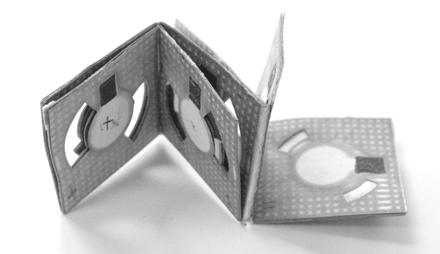An engineer out of Binghamton University has taken the Japanese art of folding paper, also referred to as “origami”, and applied it to the process of battery building.

Seokheun “Sean” Choi is the mind behind the new type of power source which, it’s worth noting, is not only inexpensive, but also powered by bacteria and made of paper.
Diving in to the details, Choi’s battery generates power from microbial respiration, an act that generates enough energy to run a paper-based biosensor with nothing more than a drop of bacteria-containing liquid.
“Dirty water has a lot of organic matter,” Choi explains. “Any type of organic material can be the source of bacteria for the bacterial metabolism.” He adds that his battery could prove useful to those living / working in remote areas with limited resources. The fact that paper is inexpensive and readily available, disease control experts can use his battery in such things as diagnostic tools while working in remote parts of the world.
“Paper is cheap and it's biodegradable,” Choi says. “And we don't need external pumps or syringes because paper can suck up a solution using capillary force.”
Choi’s battery folds into a square that is approximately the size of a matchbook. It uses an inexpensive air-breathing cathode created with nickel sprayed onto one side of a piece of office paper. The anode is screen printed with carbon paints, creating a hydrophilic zone with wax boundaries.
Altogether, putting the device together costs about five cents.
The actual “lightbulb moment” for Choi occurred while working on an earlier version of the paper-based batteries, prior to having tried out the origami approach. “I connected four of the devices in series, and I lit up this small LED,” he says. “At that moment, I knew I had done it!”
Choi, who earned a doctorate from Arizona State University after doing undergraduate work and a master's degree in South Korea, joined Binghamton's faculty less than three years ago as an assistant professor of electrical and computer engineering. He details his approach to developing an origami battery in the July edition of the journal Nano Energy.
In terms of real world application, at present, paper-based biosensors need to be paired with hand-held devices for analysis. Choi hopes to create a self-powered system in which a paper-based battery would create enough energy to run the biosensor (microwatts, in terms of power) on its own. Creating this system is the main goal of Choi’s new three-year grant of nearly $300,000 that he received from the National Science Foundation.
Advertisement
Learn more about Electronic Products Magazine





